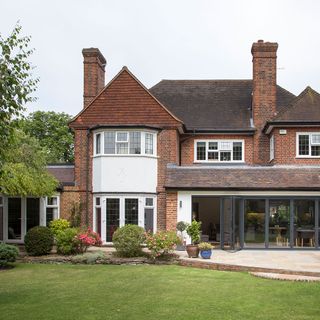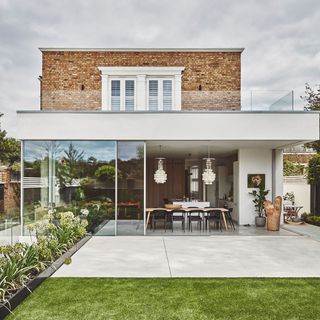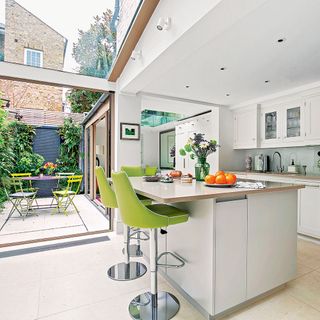Do you have to’re renovating or self-building, it’s most likely chances are you’ll be asking the question, ‘what is the R Value for insulation?’. The reply is extraordinarily very important.
When deciding on what provides to insulate your own home with, you need to ponder the R Value. The R Value of each explicit particular person supplies is used to calculate the entire U Value of a little bit of your own home. By determining the Values, you presumably can then begin to grasp how environment friendly your own home might be. This suggests being environment friendly at stopping heat loss in the midst of the winter and retaining cool in the midst of the summer time season.
It’s a very important problem to consider if you find yourself occupied with strategies to insulate your own home. ‘The higher the R Value of a property, the a lot much less heat can escape by way of partitions and loft areas,’ says Matthew Jenkins at MyJobQuote. ‘Due to this, the lower your energy funds might be.’
The R value moreover ensures that the provides you are placing in get hold of the right U Value required by Developing Legal guidelines.
What is the R Value for insulation and why is it very important?

(Image credit score rating: Future PLC)
So, what is the R Value for insulation? Properly, an R Value is a rating given to a fabric on its thermal conductivity (how successfully it resists the circulation of heat) and its thickness. ‘When insulating a establishing, the higher the R Value, the upper,’ confirms Bradley Hirst, technical suppliers supervisor at Knauf Insulation. ‘It’s as a result of a lot much less heat will escape, which in the long run reduces utility funds.’
Principally, a really highly effective issue as regards to renovating a home or self-building, is that you just actually need it to be warmth and comfortable. You on account of this truth need to determine on establishing provides which is likely to be going to bolster your experience in your property to ensure its structurally protected and strong, along with can stand as much as all local weather circumstances.
‘Bettering your own home’s energy effectivity means it may protect a gradual indoor air temperature on account of the heat obtained’t be escaping by way of the roof and partitions,’ says Bradley. ‘This has flip into way more very important than ever sooner than with the current energy bill catastrophe.’
‘Then there’s the bigger picture to think about, too. ‘By upgrading the insulation in your own home, chances are you’ll be doing all your bit to chop again the UK’s carbon footprint (all whereas retaining your energy funds down).’
How have you ever learnt what R Value to determine on?

(Image credit score rating: Future PLC)
To know what R Value to determine on, you first should know what U Value is required to your residence. A U Value is the theoretical effectivity of a wall, flooring or ceiling, taking into account all the provides utilized in it.
‘Minimal necessities are listed in Accepted Doc L of the Developing Legal guidelines,’ says Bradley from Knauf. ‘Should you’re establishing a model new residence or upgrading your current residence by way of an extension or refurbishment enterprise, the build-ups ought to meet these minimal necessities. Within the occasion that they don’t, chances are high you may uncover that Developing Administration just isn’t going to log out the enterprise until it’s been put correct,’ he says.
As quickly as you perceive what U Value is required, you presumably can then select insulation provides with the right R Value. When added to the world of the home you’re calculating (as an example, a brick wall), these will meet the required U Value.
How is the R Value measured?

(Image credit score rating: Future PLC /Chris Snook)
It isn’t almost what is the R Value for insulation – you moreover should understand how it is measured. R Values are calculated by dividing the thickness of a fabric (in metres) by its thermal conductivity (k-value or lambda value (λ)). The R Value is measured in metres squared Kelvin per Watt (m2K/W).
For example, the thermal resistance of 220mm of robust brick wall (with thermal conductivity 1.2W/mK) is 0.18 m2K/W. Ought to you may have been to insulate the 220mm robust brick wall, you merely uncover the R Value of the insulation after which add the two collectively.
Do you have to insulated it with 80mm thick foil-faced polyisocyanurate (with thermal conductivity 0.022W/mK), the R Value for the insulation might be 0.08/0.022 = 3.64 m2K/W. You’d have a whole R Value for the insulated wall of 0.18 + 3.64 = 3.82 m2K/W.
What is the best R Value for the UK?
The R Value needed for a establishing area can fluctuate counting on its location throughout the UK. Making a one-size-fits-all info near not doable. ‘For instance, a home throughout the Highlands will revenue from insulation with a greater R Value than a home in Cornwall the place the native climate is milder,’ says Matthew from MyJobQuote.
What’s further, it’s not merely a case of going out and purchasing for the right insulation. There are quite a few components to consider when choosing the right product to insulate your own home with.
‘Home availability, funds and the world of your own home that is being insulated all affect the acceptable provides for the job,’ says Matthew. ‘It might be an issue determining whether or not or not fibreglass or foam might be the right supplies various.’
What are the right R Values for varied parts of a establishing?

(Image credit score rating: Future PLC)
Do you have to’re questioning what is the R Value for insulation for varied areas of a property, then as a info, Matthew from MyJobQuote.co.uk advises the following:
- Exterior partitions: Between R-13 and R-21. Exterior wall insulation can fluctuate with older builds, with robust stone exterior partitions unable to incorporate any additional insulation till it is added externally.
- Lofts & attics: Between R-30 and R-39. With regards to roof and loft insulation, it stands to trigger that the easiest ranges of insulation must be on the prime of your assemble, the place heat will rise and try to flee.
- Basement partitions: Between R-11 and R-15. Basements are typically chilly and damp so insulation can struggle the potential drop in temperature. Nonetheless, heat loss is far much less essential throughout the lowest stage of a house a lot much less insulation is required.
- Flooring: Between R-13 and R-30. It’ll help retain heat and maintain the coolness from underfoot.
- Ceilings: Between R-19 and R-38. Insulating your ceiling is essential to help protect a safe inner temperature inside your own home.
If not sure, it is best to always search suggestion from the architect designing your individual house enterprise. Alternatively, a specialist installer can take all the varied elements into consideration to work out what the acceptable insulation is to your residence. Go to the Nationwide Insulation Affiliation for a list of accredited installers and producers in your area.
